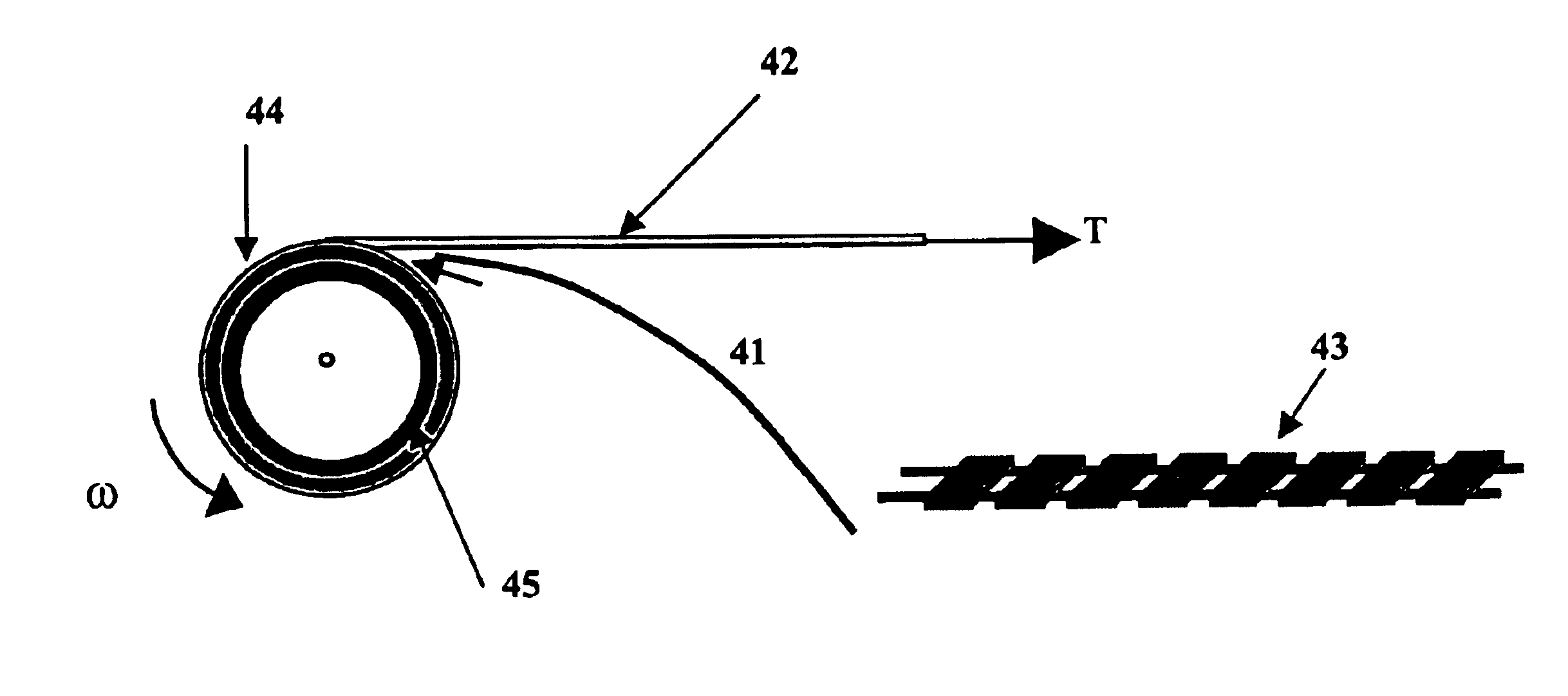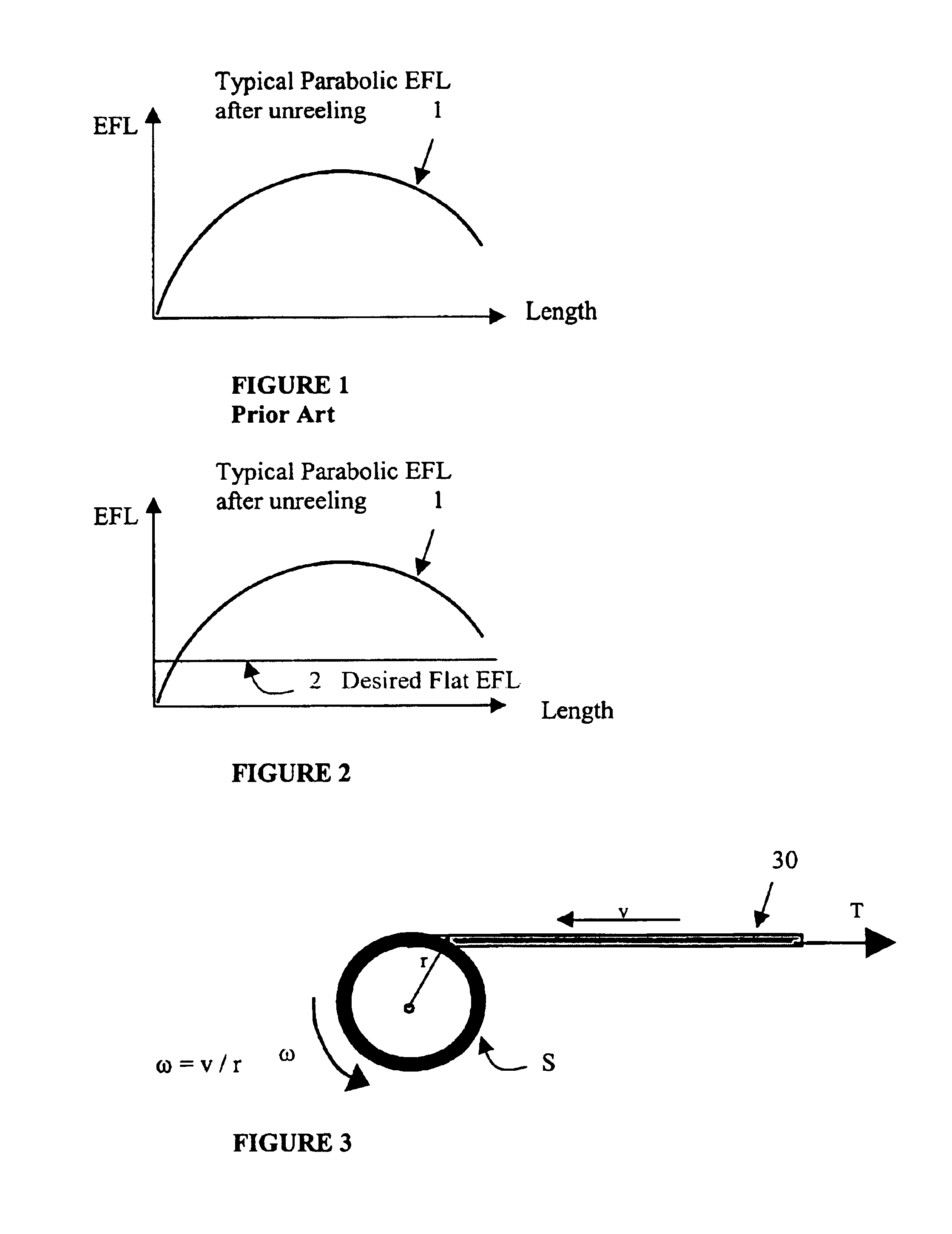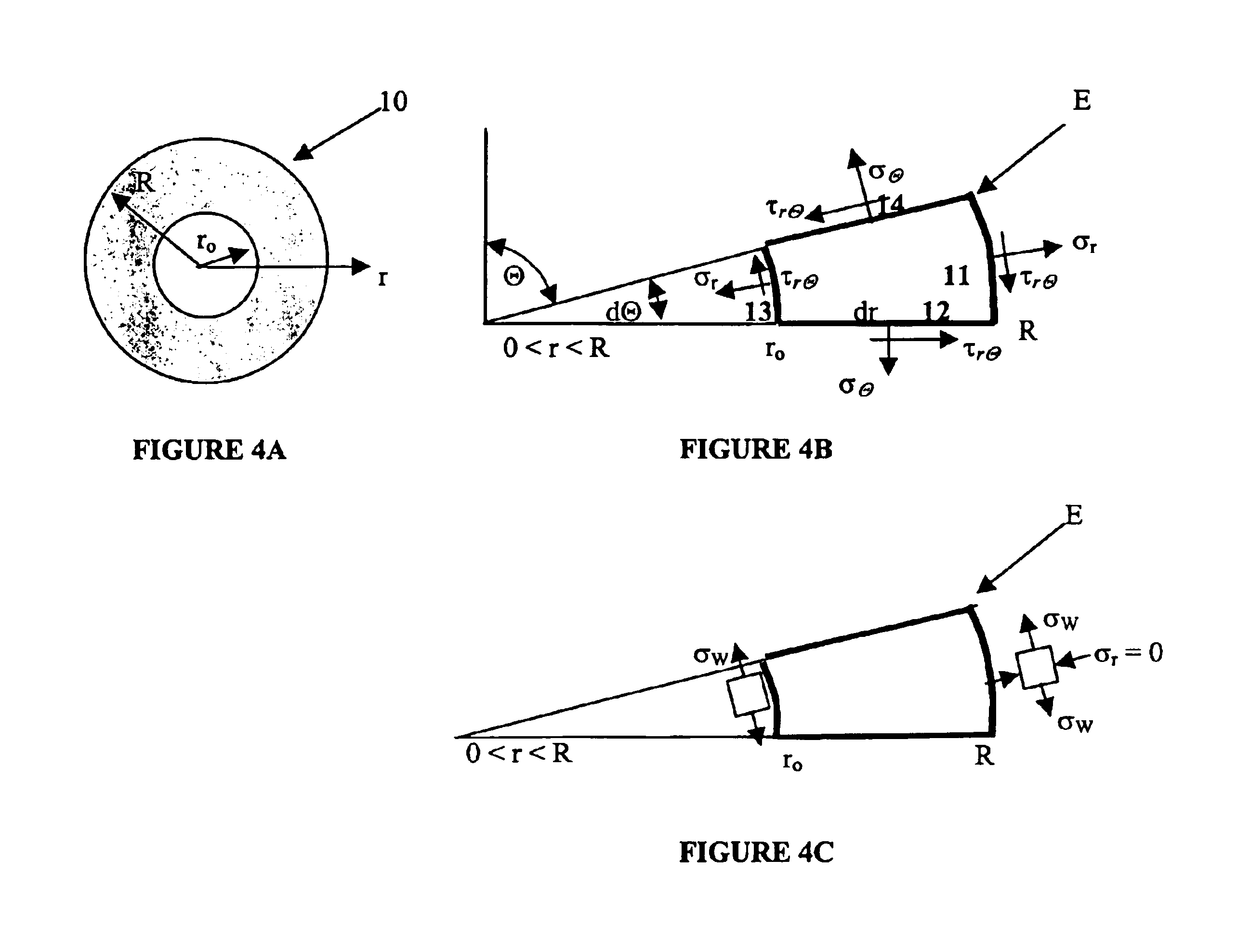Method and apparatus to reduce variation of excess fiber length in buffer tubes of fiber optic cables
- Summary
- Abstract
- Description
- Claims
- Application Information
AI Technical Summary
Benefits of technology
Problems solved by technology
Method used
Image
Examples
second embodiment
[0155]Also, as discovered in the present invention, variations in the line speed and the corresponding variation in angular velocity (“ω”) of the reel produce a variation in temperature and tensile load through the radius of the buffer tube roll. In this embodiment, a monotonically variable angular velocity of the spool is used to control the stress state in the buffer tubes, and subsequently the EFL distribution. It should be noted that it is preferred to use the monotonically variable angular velocity of the spool of this embodiment with a stiffness-compliant pad on the reel core to achieve a substantially even EFL distribution. This will be discussed in more detail below.
[0156]Examples of two possible monotonically variable curves for the angular speed of the spool are shown in FIG. 10. The curves shown 103 and 104 represent two out of many possible monotonically variable curves for angular velocity. It is noted that the exact shape of the monotonically variable curves will depen...
first embodiment
[0228]In the present invention, the take-up tension of the buffer tube is monotonically decayed as the tube is wound on the reel. The exact function used to decay the tension would be governed by the individual characteristics of the manufacturing system to be used, but is to be optimized by taking into account all of the factors previously discussed, including, line speed, reel core diameter, material properties, etc. Although it is preferred that a monotonically decaying function be used, it is contemplated that other functions may also be used to decay the tensile load on the tube during manufacture, without expanding the scope or spirit of the present invention. Further, although one of the main purposes of the present invention is to create uniform EFL distribution throughout the length of a buffer tube, it is contemplated that the present invention can be used to create a controlled non-uniform EFL distribution throughout the length of the cable, where such a non-uniform distr...
third embodiment
[0236]In the present invention, soft-cushion pads are inserted periodically with the tubes during the reeling process. This is depicted in FIG. 40 where a pad 41 is periodically inserted in the winding of the tube 42. It is preferred that the pad 41 be the width of the spool 44 and a length equal to the spool circumference at the point of insertion. It is also preferred that the pad be of a material, such as foam sheets, which would accommodate shrinkage in the tube as it cools on the reel 44. It should be noted that as an alternative to using periodically inserted pads 41, it is contemplated that a continuous pad be fed with the buffer tube 42 onto the reel 44 so that a cushioning layer is provided continuously throughout the reeled buffer tube 42. It is further contemplated that a core pad 45, as previously described above, can also be used in this embodiment.
[0237]The use of the periodic insertion of pads 41 according to the present embodiment provides space to accommodate shrink...
PUM
 Login to View More
Login to View More Abstract
Description
Claims
Application Information
 Login to View More
Login to View More - R&D
- Intellectual Property
- Life Sciences
- Materials
- Tech Scout
- Unparalleled Data Quality
- Higher Quality Content
- 60% Fewer Hallucinations
Browse by: Latest US Patents, China's latest patents, Technical Efficacy Thesaurus, Application Domain, Technology Topic, Popular Technical Reports.
© 2025 PatSnap. All rights reserved.Legal|Privacy policy|Modern Slavery Act Transparency Statement|Sitemap|About US| Contact US: help@patsnap.com



